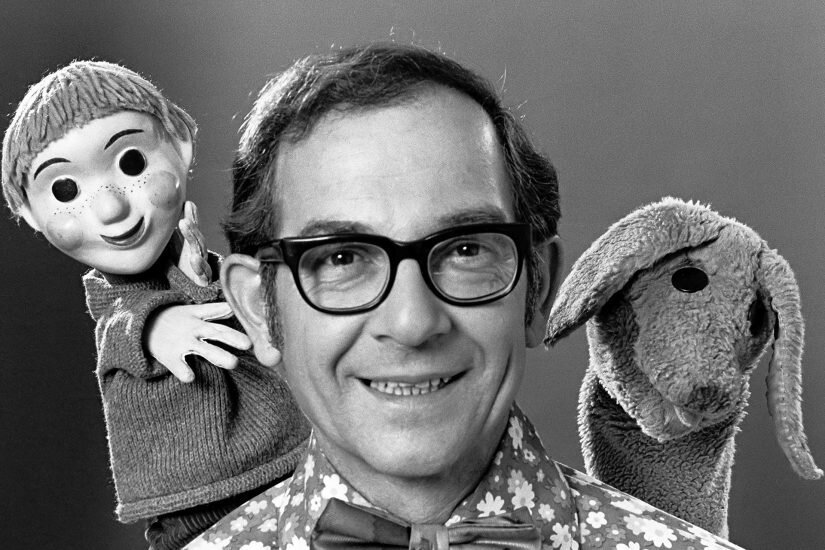Master of puppets
Photo of Casey, Mr. Dressup and Finnegan courtesy of the CBC Still Photo Collection
It takes a special sort of man to wriggle into a dragon outfit—on camera—while humming and singing about what a nice swishy tail he has. Ernie Coombs was that sort of man.
Mr. Dressup was one of the longest-running children’s television shows in Canadian history, airing on the CBC from 1967 to 1996. A typical episode consisted of Coombs, the grandfather of DIY, in character as “Mr. Dressup.” In roughly 4,000 episodes, he led arts-and-crafts tutorials, singalongs and of course trips to the infamous Tickle Trunk, home to an infinite number of colourful costumes. Coombs didn’t inspire decades of children alone. He had help from numerous puppets over the years: first Casey and Finnegan and then, after puppeteer Judith Lawrence retired, Chester the Crow, Truffles, Granny, Annie, Alex and Lorenzo the Raccoon.
The vibrant sets, kooky characters and appeals to the imagination were just parts of what made Mr. Dressup so enchanting to young viewers. The show’s philosophy was kind and tender, much like Coombs’ demeanour, and it maintained its tone even as children’s programming evolved to include violence (Mighty Morphin Power Rangers) and innuendo (Animaniacs) as the years ticked by. Though some might describe it as a safe show, Mr. Dressup was quietly ahead of its time. It helped to create the market that later series like Polka Dot Door, The Elephant Show, and The Big Comfy Couch were born into. And, to make the viewing experience as inclusive as possible, Lawrence made a point of not assigning a gender to Casey. As she told the CBC in 2015, “Kids often said to me, ‘Is Casey a boy or a girl?’ and I’d say, ‘Well, what do you think?’ And if they said ‘girl’ I’d say ‘yes,’ and if they said ‘boy’ I’d say ‘yes.'”
Of course, without Ernie Coombs, there would be no Mr. Dressup. The genial host was born and raised in Maine, where he studied commercial art. He got his start in entertainment first as a puppeteer for Fred Rogers—yes, Mister Rogers—and debuted Mr. Dressup as a regular character on a CBC series called Butternut Square (1964–1967). He’d move to Canada and settle in Pickering, Ontario, but wouldn’t become a citizen until 27 years into Mr. Dressup’s run. The show’s final episode taped in 1996, when Coombs decided to retire. Rebroadcasts played for the decade to follow.
Ernie Coombs passed away in 2001. Eleven years after his death, Google displayed a Mr. Dressup doodle on what would have been his 85th birthday, honouring his achievements as a children’s entertainer.
Mr. Dressup might be gone, but the series’ legacy endures. Props from the show live on in at the CBC Museum in downtown Toronto, as do fond memories in the hearts of generations of viewers. So how did a simple concept become the cornerstone of Canadian children’s television? Coombs put it best in an interview shortly before his retirement: “[Mr. Dressup is] gentle. It’s quite real. I think the kids feel we’re real people—even the puppets are real people…I think it is the honest approach we have on the show.”
This story first appeared in Passport2017, a Strategic Content Labs and Heritage Canada project.
